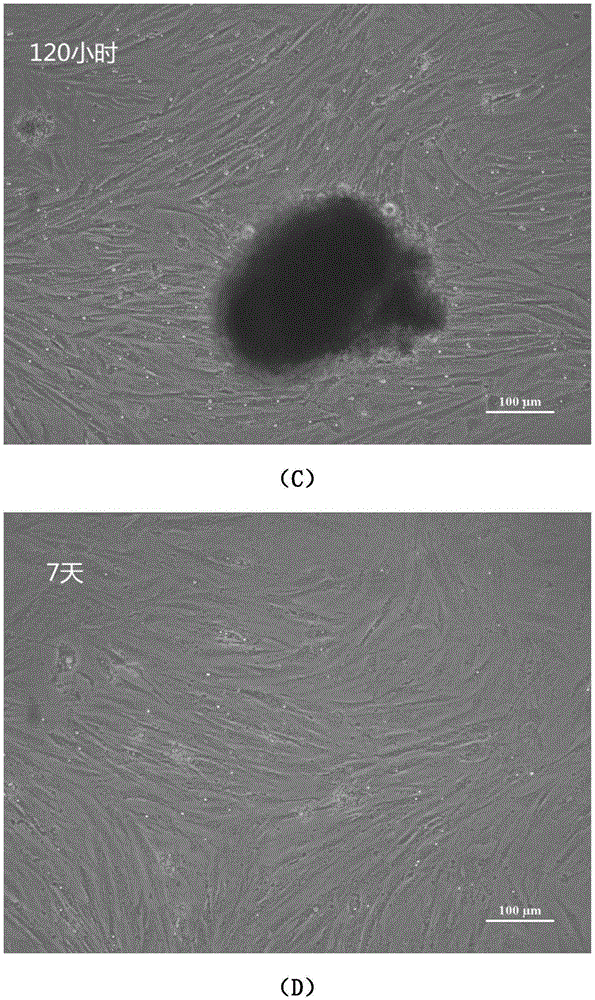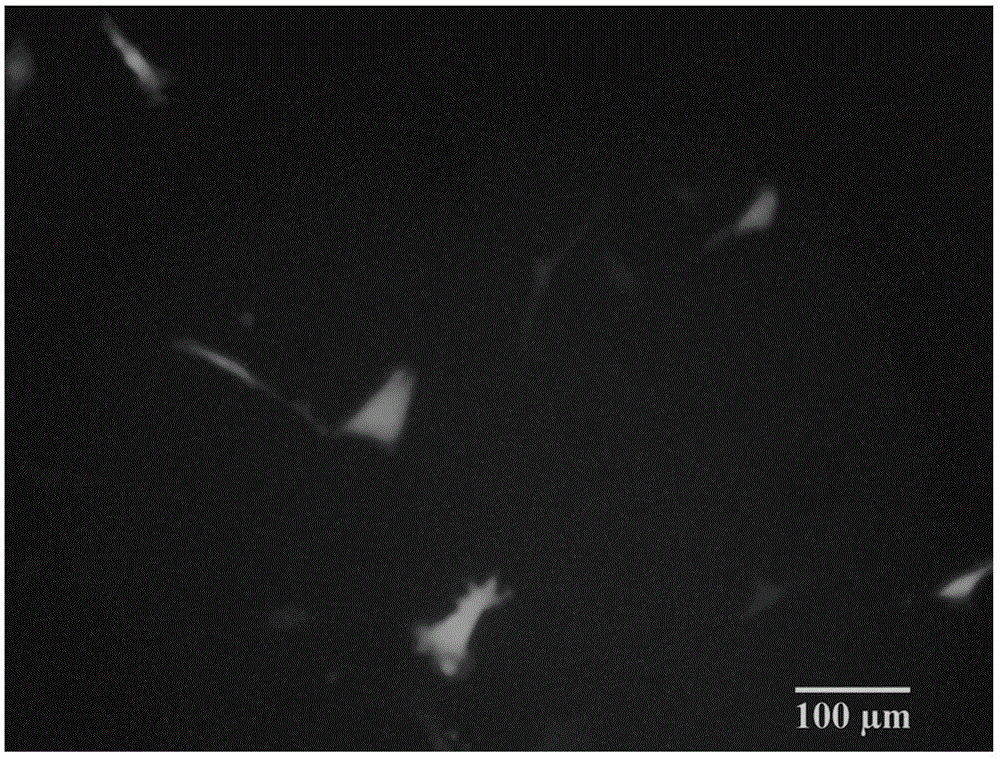Turbot liver tissue cell in-vitro establishing method and application thereof
A technology of liver tissue and turbot, applied in artificial cell constructs, applications, animal cells, etc., can solve problems such as poor repeatability, slow growth, and cell emigration, and achieve low cost, promote emigration, and rapid cell growth Effect
- Summary
- Abstract
- Description
- Claims
- Application Information
AI Technical Summary
Problems solved by technology
Method used
Image
Examples
Embodiment 1
[0018] Example 1 A method for primary culture of turbot liver tissue cells.
[0019] Proceed as follows:
[0020] (1) The preparation of culture medium, its step is as follows:
[0021] L-15 liquid medium was purchased from Sigma Company, 100× penicillin and streptomycin solution and 100× sodium pyruvate solution were purchased from Suleibao Company, fetal bovine serum was purchased from Gibco Company, L-alanyl-L-glutamine Amide was purchased from Life Company, and growth factor was purchased from Peprotech Company;
[0022] The preparation method of perch serum: about 2kg of perch blood is taken from the tail vein, and it is made by sterilizing through a 0.22μm filter after bathing in water at 56°C for 30 minutes;
[0023] Preparation of growth factor bFGF and EGF solutions: respectively dissolved in 0.1% bovine serum albumin solution to make 10 mg / ml mother solution, and stored at -20°C after aliquoting.
[0024] Preparation of basal medium: add 1ml of 100× penicillin and...
Embodiment 2
[0046] Example 2: Reporter plasmid transfection of primary cultured cells of turbot liver tissue.
[0047] 72 hours after the start of the primary culture of turbot liver tissue cells, the PIRES2-eGFP reporter plasmid was transfected into the cultured cells in vitro. After 24 hours, the successful expression of green fluorescent protein could be observed, proving that the constructed turbot liver tissue In vitro models of cells are available for molecular cell biology studies in fish.
[0048] Specific steps:
[0049] (1) Primary culture of turbot liver tissue cells, the specific steps are as described above.
[0050] (2) 72 hours after the initiation of the primary culture, the PIRES2-eGFP reporter plasmid was transfected into the cultured cells in vitro.
[0051] Specific transfections include:
[0052] ①The turbot liver tissue cells were mixed with 10 6 The density per well was inoculated into 6-well plates, cultured in a biochemical incubator at 24°C, and the old mediu...
PUM
 Login to View More
Login to View More Abstract
Description
Claims
Application Information
 Login to View More
Login to View More - R&D
- Intellectual Property
- Life Sciences
- Materials
- Tech Scout
- Unparalleled Data Quality
- Higher Quality Content
- 60% Fewer Hallucinations
Browse by: Latest US Patents, China's latest patents, Technical Efficacy Thesaurus, Application Domain, Technology Topic, Popular Technical Reports.
© 2025 PatSnap. All rights reserved.Legal|Privacy policy|Modern Slavery Act Transparency Statement|Sitemap|About US| Contact US: help@patsnap.com



